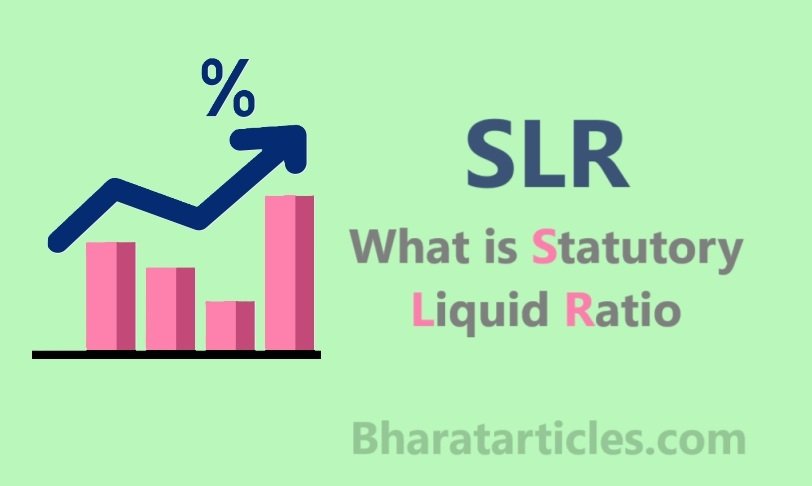
What is Statutory Liquid Ratio (SLR)?
Introduction
The Statutory Liquid Ratio (SLR) is a critical monetary policy tool used by central banks to regulate credit flow and maintain financial stability in the banking system. In India, the Reserve Bank of India (RBI) mandates that commercial banks maintain a certain percentage of their net demand and time liabilities (NDTL) in the form of liquid assets. This requirement is known as the SLR, and it plays a vital role in controlling inflation, ensuring liquidity, and fostering economic growth.
Definition of SLR
SLR is the minimum percentage of a bank’s net demand and time liabilities that must be kept in liquid assets such as cash, gold, or approved government securities before offering credit to customers. The SLR is determined by the central bank and is periodically adjusted to meet the evolving needs of the economy.
Objectives of SLR
- Liquidity Management: SLR ensures that banks maintain adequate liquidity to meet withdrawal demands from depositors.
- Credit Regulation: By altering the SLR, the central bank can control the flow of credit in the economy, thereby influencing inflation and economic activity.
- Promote Investment in Government Securities: By mandating investments in government-approved securities, SLR helps in funding government borrowing programs.
- Ensure Financial Stability: SLR acts as a safeguard for the banking system, reducing the risk of over-lending and promoting prudent financial management.
Calculation of SLR
SLR is calculated as a percentage of a bank’s NDTL. The formula is:
SLR = (Liquid Assets / Net Demand and Time Liabilities) × 100
- Liquid Assets: These include cash, gold, and unencumbered government securities approved by the RBI.
- Net Demand and Time Liabilities (NDTL): These refer to the total demand and time deposits held by a bank, excluding certain exemptions as specified by the RBI.
SLR as a Monetary Policy Tool
SLR is one of the instruments used by the central bank to regulate monetary policy. Here’s how changes in SLR impact the economy:
- Increase in SLR:
- Reduces the funds available for lending.
- Helps in controlling inflation by limiting the credit supply.
- Promotes investment in government securities.
- Decrease in SLR:
- Increases the funds available for lending.
- Boosts credit flow, stimulating economic activity.
- Encourages liquidity in the banking system.
SLR vs CRR
The Cash Reserve Ratio (CRR) is another key monetary policy tool often compared with SLR. While both serve to regulate the banking system, they differ in their purpose and application.
| Aspect | SLR | CRR |
|---|---|---|
| Definition | Minimum percentage of NDTL kept in liquid assets. | Percentage of NDTL maintained as cash with RBI. |
| Objective | Ensure liquidity, promote government securities, and control credit. | Regulate liquidity and control inflation. |
| Form of Maintenance | Cash, gold, or approved securities. | Only cash reserves. |
| Earning Potential | Banks earn interest on securities held under SLR. | No interest is earned on CRR balances. |
| Usage | Focuses on financial stability and investment in government programs. | Primarily aimed at controlling inflation. |
Importance of SLR in Banking
SLR serves as a cornerstone for financial discipline and stability in the banking sector. By ensuring that banks maintain a reserve of liquid assets, SLR reduces the risk of insolvency and supports the central bank’s broader monetary policy goals. It also encourages banks to invest in government securities, aiding public sector funding and fostering economic stability.
Recent Trends in SLR in India
The RBI periodically revises the SLR to adapt to the prevailing economic conditions. In recent years, the SLR has been gradually reduced to ensure adequate credit flow and stimulate economic growth. These adjustments reflect the central bank’s proactive approach to balancing liquidity, inflation, and growth objectives.
Conclusion
Statutory Liquid Ratio (SLR) is a vital regulatory mechanism that ensures liquidity, financial stability, and disciplined lending practices in the banking system. Along with other monetary tools like CRR, SLR enables central banks to effectively manage economic challenges and support sustainable growth. As the financial landscape evolves, the role of SLR continues to be indispensable in maintaining the health and stability of the economy.
Read also:DigiSaathi Portal: Empowering India’s Digital Payment Ecosystem







Pingback: What is Relative Strength Index (RSI)? - Bharat Articles